21 Ways to Fix the MBTA Now
Boston’s public transit system is on the verge of disaster: stations are crumbling, staff are underpaid and undertrained, and safety incidents are rampant. We spoke with twenty-one insiders on how to solve the crisis.

Photo by Carlin Stiehl/Boston Globe via Getty Images
1. More Free Buses
Kim Janey, former Boston mayor and current president and CEO, Economic Mobility Pathways (EMPath)
The T is a public good. We have to treat it like a public good, the way we invest in our libraries and our schools. I would continue and expand the free buses. As mayor of Boston, I launched fare-free transit with the number 28 bus, and Michelle Wu’s administration expanded it to the 23 and 29.
Some of the poorest people in our city ride the 28 bus. They depend on it to get to doctor’s appointments, to take their children to and from school or daycare, and to get back and forth to work.
When we made it free, ridership increased, and it also increased speed and reliability. You can have all the doors open; everyone can board the bus without digging for change and putting wrinkled dollar bills through a system that spits it out. So they’re staying on schedule.
At EMPath, many of our participants are unhoused or living in deep poverty. As they are trying to build their lives and careers and break that cycle of poverty, having a transit system that is operational, dependable, and affordable is essential to them being able to climb the economic ladder.
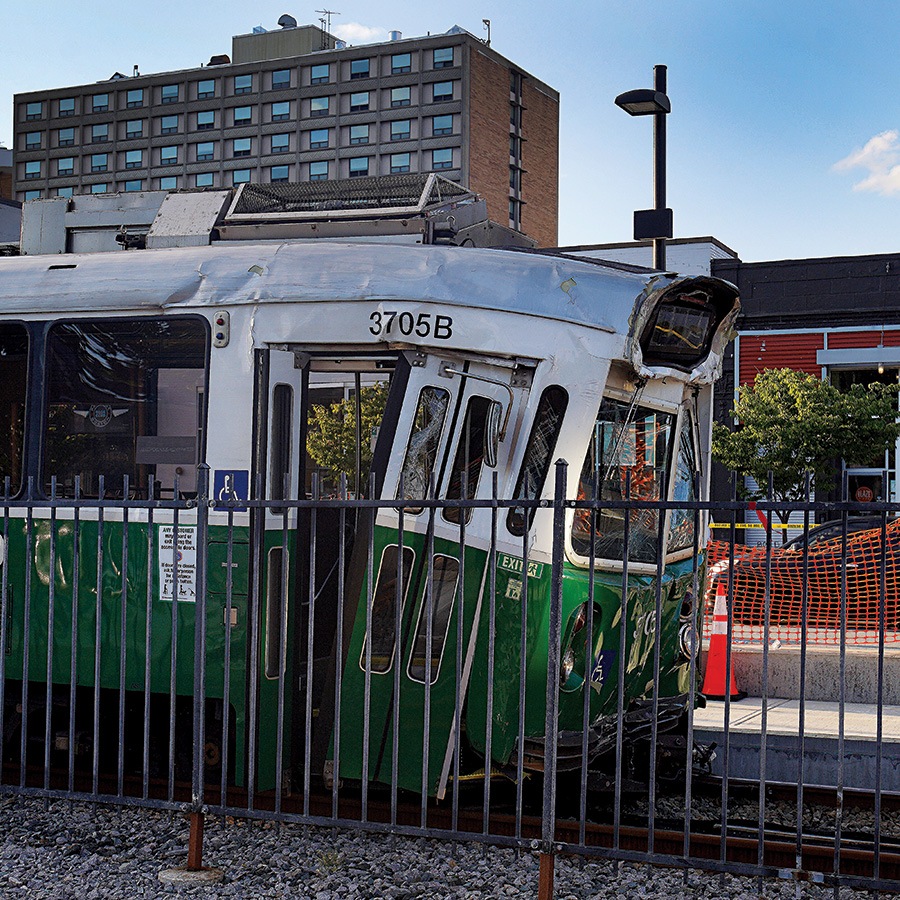
Photo by Barry Chin/Boston Globe via Getty Images
2. Keep the T Safe
Pete Wilson, senior policy adviser, Transportation for Massachusetts
We should appoint an independent safety oversight board with revolving terms so that we get an entity that has not only the expertise but also the focus and independence to keep accidents and malfunctions at bay.
Under the transit guidelines issued by the Federal Transit Administration (FTA), each state has to designate its own safety oversight organization—for Massachusetts, it’s the Department of Public Utilities (DPU). When the FTA reviewed the T’s safety record last year, the report didn’t only point out the safety problems and shortcomings; it also highlighted the DPU and its lack of response. The report questioned the DPU’s independence from interference by the governor, given that the governor appoints MBTA board members and also approves the DPU’s three-member Commonwealth Utilities Commission. The concern is that the DPU might be coordinating with the governor’s office or with the MBTA to avoid political embarrassment. It’s definitely not transparent—there are things that we only know because the Boston Globe got information through Freedom of Information requests.
That’s why more recent entities—the Cannabis Control Commission and the Massachusetts Gaming Commission—have members appointed by the treasurer, the attorney general, and the governor—spreading out the allegiances, if you will.
An independent board, which is being considered by the legislature, could be set up to issue corrective actions and even have enforcement authority. People have a concern about political malfeasance or intrusion into certain things, and safety on the T should not be one of them.
3. Get It Straight
Doug Most, author, The Race Underground
It might be a pie-in-the-sky idea, but let’s get rid of the sharp turns to make the Green Line faster.
Why is the Green Line so slow and torturous in certain spots? It’s because these tunnels were built in a different era, with very sharp turns. We have these very short trains, and then they’re forced to hit the brakes and go 5 miles an hour around these bends.
These are hard left and hard right, almost 90-degree turns. It’s an unusual thing for a public transit system to have that.
Now, it’s a huge project to build a new tunnel under the Common; that’s not a thing to be taken lightly. And you might need to remove the Boylston Street station. There would be resistance, but I work at Boston University, and they just got rid of two stops on the B Line to make the Green Line faster along Commonwealth Avenue. People adapt and adjust.
Back in the 1890s, there was tremendous resistance to building a subway. People thought the underground was a horrible, scary place; merchants were really opposed to it because they could only think about how the construction was going to hurt their business.
What they were not able to recognize was that foot traffic and congestion in cities were so bad that this was going to improve their business and improve city life. So it sort of had to be forced upon them. And sometimes, that is the way things have to happen. Today, it is important for us to take the long view on some of these projects and not be short-sighted.
4. T Academy
Jamey Tesler, visiting fellow, Taubman Center for State & Local Government, Harvard Kennedy School
A successful T will be a larger T, a great employer that has succeeded at recruiting new and different people into the workforce. One way that I’m confident we could help the team achieve that is with a Massachusetts Infrastructure Academy. The goal would be to complement the initiatives of the Healey-Driscoll administration, the transportation secretary, and the general manager to aggressively hire people for the MBTA by offering an educational pathway that’s going to bring many more people into the transit industry.
The FTA safety report last year indicated that the T could need up to 2,000 net new employees. Not just bus drivers: safety positions, maintenance workers, engineers, transportation planners, and technology staff. The academy would support the MBTA, but it would also help the Regional Transportation Authorities, which have the same challenges. It would help the private partners that the MBTA and MassDOT work with. It would also help us accomplish our diversity and equity goals.
We would have a competitive process in selecting private educational partners—in western Massachusetts, the South Coast, the Boston region, and the North Shore. This has to be a partnership between the infrastructure agencies on the government side, labor, and some of our world-class educational institutions.
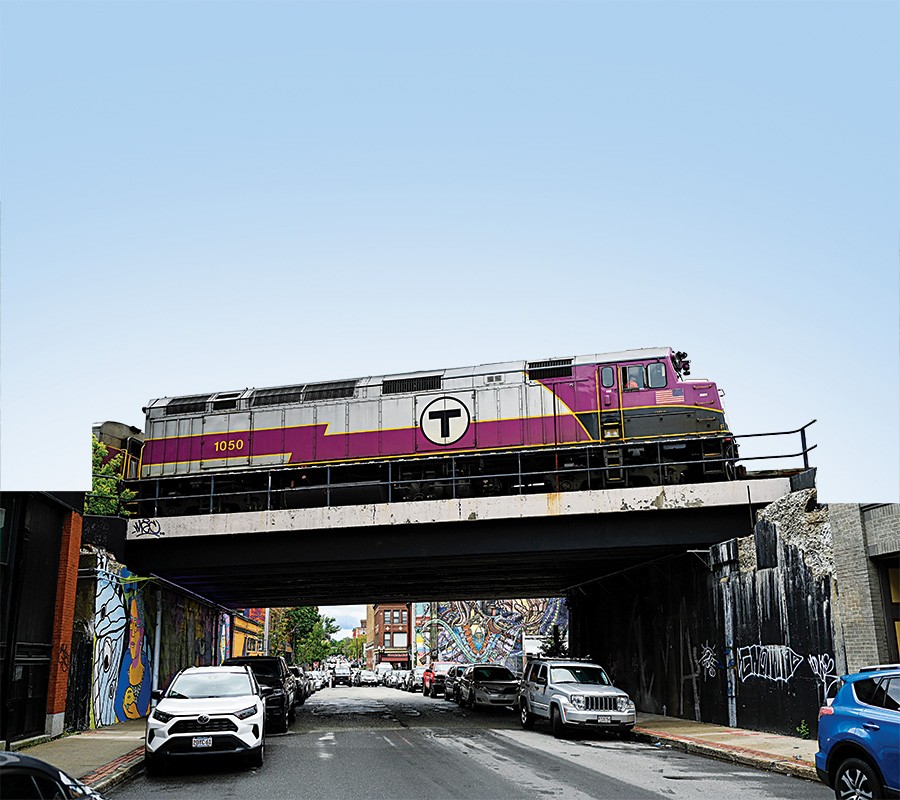
Photo by Vincent Alban/Boston Globe via Getty Images
5. Make the Road Agencies Pay
Christian MilNeil, editor in chief, StreetsblogMass
Sooner or later, the state is going to have to figure out how transportation is going to reach net-zero carbon by 2050. Right now, the plan is basically putting the burden on consumers, expecting us all to buy $50,000 electric cars. And that’s not working.
With the electric power sector, the burden was put on the big utilities. The state wrote laws that said, You are going to have to generate a certain amount of clean electricity every year; we don’t care how you do it, but you are going to be held accountable to these benchmarks.
What if we treat the Massachusetts Turnpike and Interstate 93 like power plants that generate pollution and say the amount of pollution coming from I-90 and I-93 needs to be cut by 50 percent by 2030? MassDOT would have an incentive to postpone some of its big highway projects and instead invest in higher-speed rail between Boston and Springfield to take some trips off the turnpike. Helping the MBTA electrify the commuter-rail system, which is currently run on diesel, meanwhile, might reduce trips on Interstate 93.
What’s more, if their benchmarks aren’t reached, MassDOT—or any other transportation carbon emitters—would have to pay a penalty. And the penalty should be sufficiently sized to allow the MBTA to considerably expand its service and take some trips off those roadways.
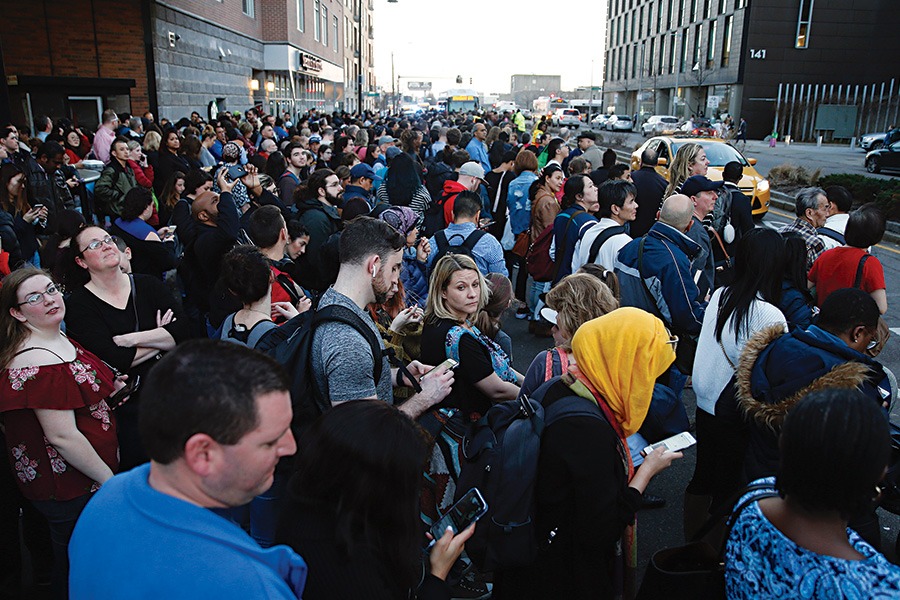
Photo by Jessica Rinaldi/Boston Globe via Getty Images
6. A.I. for the Win
Jinhua Zhao, professor of city and transportation planning, Massachusetts Institute of Technology
When something significant happens on public transportation—the line is down, the road is congested, some bridge is blocked—the customer is suddenly stuck in the system and needs more help. For when that happens, we developed a solution to send individualized guidance for a better transit option to that person, communicated by text message or an app. If the MBTA adopts the program, it would help both the individual customer and also the whole system.
This initiative requires a close to real-time understanding of the system status. If a portion of the Red Line is down, it would need to know how the bus lines are performing—if it guides you to bus route 1, and it is already congested and crowded, you are not going to get a seat. That’s not useful.
The program needs to know not only where the passenger is going but also whether the passenger prefers the bus or train. Is he sensitive to pricing? Is he okay to walk for 10 minutes? And then it needs the optimization algorithm that, given all this information, develops a recommendation with the purpose of improving the overall system efficiency.

Photo by Craig F. Walker/Boston Globe via Getty Images
7. Boost Salaries
Stacy Thompson, executive director, LivableStreets Alliance
The T can’t do anything until they have the staff to do it. The general manager announced that they are going to allow new bus operators to start with full-time schedules (rather than part-time with inconvenient split shifts), which is one of our top recommendations, but the T and the union have not talked about the starting-wages problem.
The starting wage they’re offering is about $43,000 a year. That’s at the low end of bus-operator salaries for major cities, for one of the most expensive urban regions in the country. We should be paying at least 50 percent of Area Median Income, which is roughly $50,000. We have to pay at least that. These are state employees. This is supposed to be a job that someone can live off of and make a decent income.
With the transportation money from the Fair Share Amendment (a.k.a. the millionaires’ tax), the governor has focused on one-time expenses. That money would be more useful for operating funds, which could contribute to solving this challenge overnight. It’s a reasonably predictable sum that you can plan for and can be dedicated to hiring people and building salaries.
8. Follow Ted Lasso’s Mantra: Believe
Najah Casimir, mobility program officer, Barr Foundation
When humans desire change, it’s helpful to start with the belief that change is possible. I ask people what would need to happen for commuters to use the MBTA instead of driving, and even the most visionary thinkers I know believe that might be a radical and impossible idea. And if we think that’s impossible, then it’s going to be impossible.
We need to start with leadership: the transportation secretary and the general manager. Do they really believe that the system can work? At the State House, in municipal government, what is your belief about how this system is supposed to function?
And then the general public. Even I, as a rider, catch myself thinking, Well, of course the train isn’t coming for 20 more minutes, because that’s just how the MBTA is. Right now, we’re stuck in a perpetual state of “it’s broken,” and if we stay in that mindset, then it’s always going to be broken. We’re always going to be finding another thing to fix. This doesn’t have to be. Something else is possible.
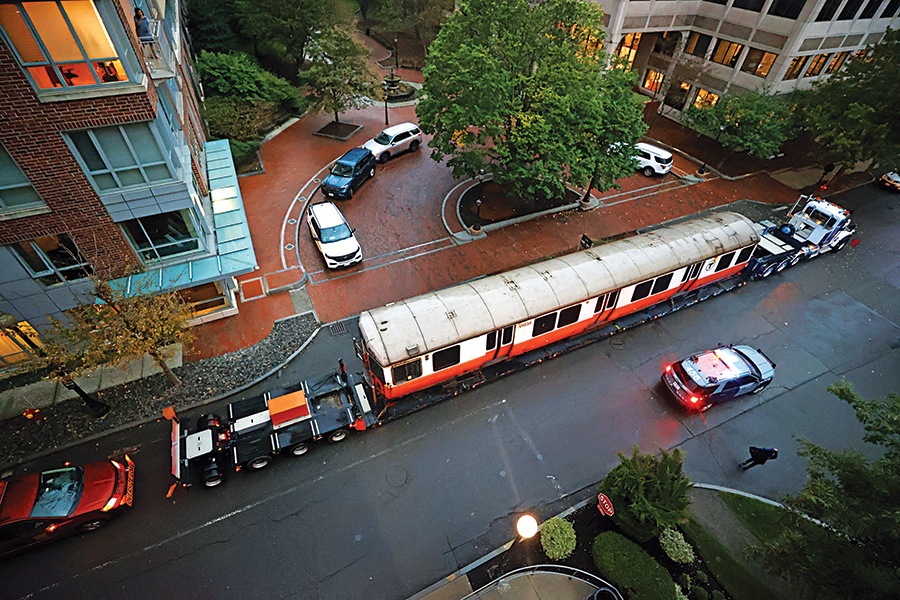
Photo by David L. Ryan/Boston Globe via Getty Images
9. Get Real About Shutdowns
Kate Fichter, former assistant secretary for Policy Coordination at Massachusetts Department of Transportation
The leadership of the MBTA needs to be frank with the riding public that the closures and diversions we’ve been experiencing in order to fix things are not one-offs. This needs to be a well-thought-through system-wide program of modernization, with major significant shutdowns of the subway system.
These shutdowns are crucially important; they’re the only way the T is going to get the concentrated time and focus that it needs to do the work that needs to be done on this very old system.
There needs to be an entire Greater Boston effort to help the T through this very difficult period of intensive capital repair work. It is going to be a pain for everybody, and lessening that pain is going to require high-level cooperation and intentional thought. The cities and towns, the governor’s office, and the press all need to get onboard, pitch in, and figure out how we can best help riders.
Let’s work together to figure out the best places to put bus stops for substitute buses, or increase the number of Bluebikes available, or temporarily expand the sidewalk. The MBTA also needs experts dedicated to understanding how to reach folks, who can communicate why these shutdowns are happening, how long it’s going to last, and how we’ll help them get through it.
10. The Missing Link
Seth Moulton, U.S. congressman
Fundamentally we need to transform transportation in the state by creating a unified rail system that provides service every 15 minutes and is faster than driving throughout eastern Massachusetts. And the most critical piece to regional rail is the north-south rail link, which would connect North and South Station.
Right now, to get from North Station to South Station, you have to get off the train, get onto the Green Line and switch to the Red Line.
The state has set aside money to do a South Station expansion, which is unnecessary if you do this project. And Widett Circle does not need to become a rail yard if you do this project. If you combine the savings of the South Station expansion with the real estate value of Widett Circle, you’ve paid for the link already. Boston can’t continue to grow unless we solve the traffic problem, and this is the only project transformative enough to do that.
11. Improved Performance = Improved Climate
Joe Curtatone, former Somerville mayor and current president, Northeast Clean Energy Council (NECEC)
Transportation contributes almost 30 percent of greenhouse gas emissions. To reduce that amount by transitioning single-occupancy vehicles to the T, we need a sustainable, predictable, reliable transportation system. So our approach on climate action needs to be aligned with making the T perform better.
The adage “You can’t manage what you don’t measure” is absolutely true. What you measure says something about who you are. The T should establish a wide variety of customer-facing standards through the lens of a climate-action plan. For example, if the T reduces the number of incidents that result in injury by X amount, then it’s safe for more people to ride the T, and more passengers will take public transportation. It all relates to our climate-action goals.
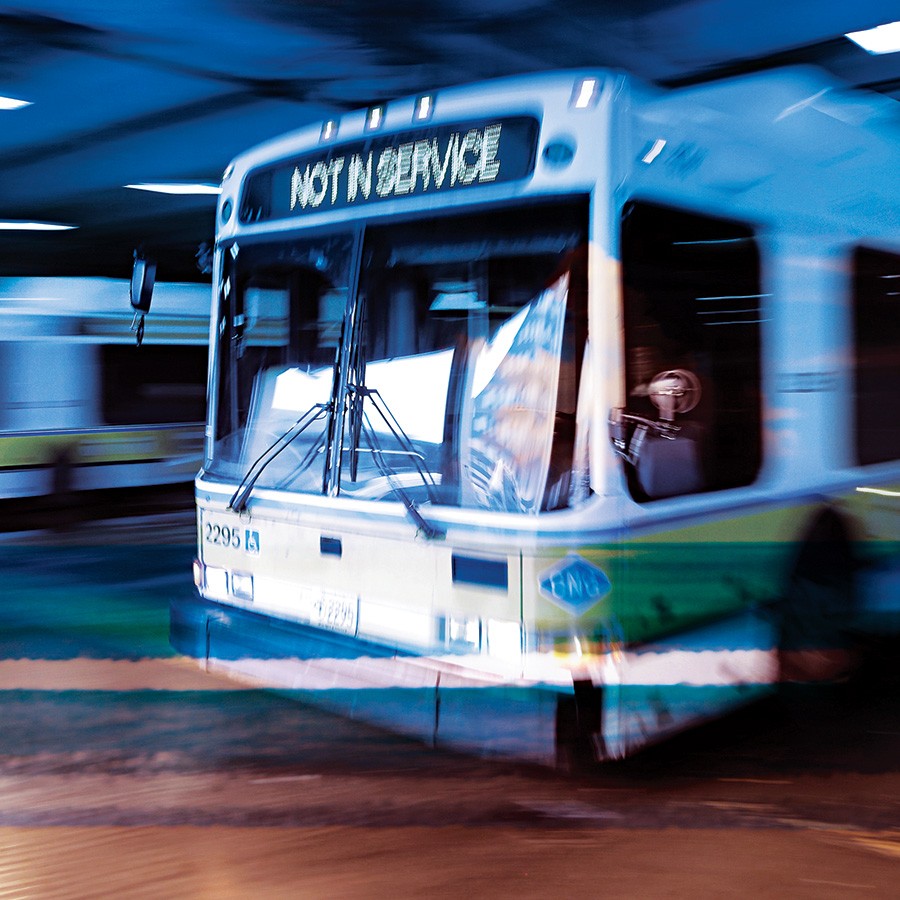
Photo by Lane Turner/Boston Globe via Getty Images
12. Stop Ghosting
Mela Bush-Miles, transit-oriented development director, Alternatives for Community and Environment
Ghost buses are buses that are scheduled but don’t arrive, or are too crowded to let people on, or put on their “Out of Service” sign. Did it really go out of service, or did the driver have to go to the bathroom? I don’t know.
I got ghosted trying to go to the MBTA board meeting last month to make a public comment. I was waiting for the Silver Line bus at Nubian Station. I stood there for 10 minutes, then 15, and it hadn’t even shown up on the announcement marquee. I gave up; I just couldn’t do it that day.
They used to give commuter-rail riders a free ride if it was late by a certain number of minutes—the contractor had to pay the MBTA back and give the customer a free ride. Maybe they would improve service if they had to compensate bus or subway riders.
But to truly fix this, we have to get to the root of the problem. The MBTA doesn’t have enough dispatchers at its operations control center, and they have a driver shortage. To recruit more people, the MBTA has to make itself more appealing to prospective employees. It’s not very attractive to a parent with children who needs daycare. Bus drivers are also put in an awkward position of trying to enforce fares—I’ve seen somebody punch the driver in the eye. Why would they take a job like that?
The ghost-bus issue is multifaceted, but you have to dig down to how the MBTA is recruiting and retaining people.
13. Encourage Etiquette
Chris Dempsey, transit advocate
It could be helpful, especially now as ridership is returning post-COVID, for the MBTA to use public service announcements to provide guidance on etiquette that makes the shared space more efficient for everyone.
Not in a schoolmarm-y, finger-wagging way. Nobody is looking to write a ticket for someone standing on the left side of the escalator. We know that the T is not perfect, and it should not expect perfection from its riders either.
Yet riding transit is about entering into a social compact with other riders, and it works best when there is a broadly shared set of behaviors that help guide the space, in the same way that the etiquette around being in a public library is that you’re supposed to be quiet and talk in a hushed voice. Audio announcements are an obvious way, but there are other avenues to reach riders directly on vehicles, in stations, on the T’s website, and through third-party applications.
Some subway systems paint feet on the escalators that have standing on the right side and walking on the left side. It would be great for the T to remind riders to let people on and off the vehicles by standing to the side and not blocking the doors at a station or a bus stop. Or moving into a vehicle away from the doors on a busy day. That’s another example where some reminders and encouragement would go a long way toward making the system work better for everyone.

Photo by Wendy Maeda/Boston Globe via Getty Images
14. Make Riding the T More Fun
Ilana Katz Katz, artist, musician, and longtime busker
I know that safety is most important for the MBTA, but we don’t have to wait until it’s completely safe to add the arts. I’ve played in the subway for more than 10 years. But now ridership is down, and money is down, and it’s less inviting. It used to be festive and fun.
We can make public transit better and pull in the public by making it friendlier to performers. To accomplish that, I would love to see a busking advocate at the MBTA. An advocate could email everyone who has an MBTA performance permit and ask us to send in a bio and a photo and talk about who we are as musicians and artists. What are our favorite stations? What do we like about them? They could even name a performer of the month and put it on the T’s website or social media.
Another thing officials could do is walk through the stations to see what they can do to make them friendlier for street musicians. There used to be signs in the stations designating the performers’ areas. But those signs are all gone. And in one of my favorite stations to play, they put a really ugly, gross trashcan right in front of where I play. A lot of other performers tell me they won’t play there anymore. Those things are happening in a variety of places, and as an artist, it makes me feel not valued by the MBTA and, in turn, jeopardizes something that can add joy and even more riders to the T.
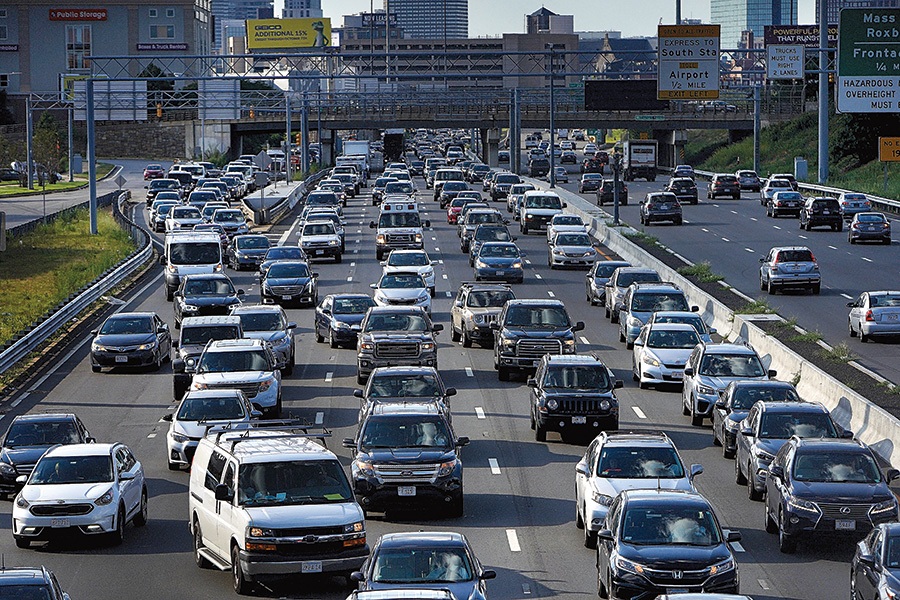
Photo by Barry Chin/Boston Globe via Getty Images
15. Get Drivers Off the Road
Jarred Johnson, executive director, TransitMatters
We have to get away from the idea that transit is for other people. We need to design transit solutions that are frequent enough and high-quality enough that we are giving drivers a reason to get off the road.
That’s not going to be cheap. But neither is expanding roadway capacity. The legislature has been at the bar for the last 40 years, downing drinks like candy, and now the tab is due. If you don’t invest in the core assets of the system for 40 years, of course you’re going to have a big bill.
The state should set an aggressive goal for mode shift: When we look out at 2050, what percentage of people are driving vehicles, and what percentage are taking buses, walking, biking, using the T, and using the commuter rail?
What would that public transportation system look like? That’s the carrot side. What does our transit network need to do? Some of these are physical things: expanding the system, running more evening and weekend services. Another part is getting creative about the first mile/last mile of the commute: micro-mobility, bike paths, and autonomous shuttles that can get people to commuter-rail stations or to the ends of the subway network.
Then on the stick side, what are we doing to make sure that the costs of driving are accurately reflected? To change people’s habits, make sure folks understand that there is a cost to driving.
16. Give the GM Some Time
Joe Aiello, senior fellow, Center for International Environment and Resource Policy, the Fletcher School at Tufts University
If you want to change the culture at the MBTA, which is absolutely necessary, you have to have stability at the top. We as a community have got to make the new general manager, Phillip Eng, successful and invest in him to make sure he can bring about long-term change.
When I became chair of the MBTA’s new Fiscal and Management Control Board in 2015, multiple people said, “We will wait you out.” It was pretty remarkable to see the entrenchment and suspicion of the governing bodies around the T.
The staff is used to instability. There has been a new general manager, on average, roughly every three years. It’s similar with the secretary of transportation. When you have that much turmoil in the upper levels of any organization, it makes it very difficult for the rank and file. The leaders don’t have time to really understand the nuts and bolts of the organization, the different levers they have to pull to make sure that the place gets its resources and is held accountable.
Even in the best of times, running the T is probably the hardest public-sector job, absent the governor, in the state. We as citizens need to be supportive of the general manager and of the board—trying to hold them accountable but also making sure that they stick around, because this is a long journey.
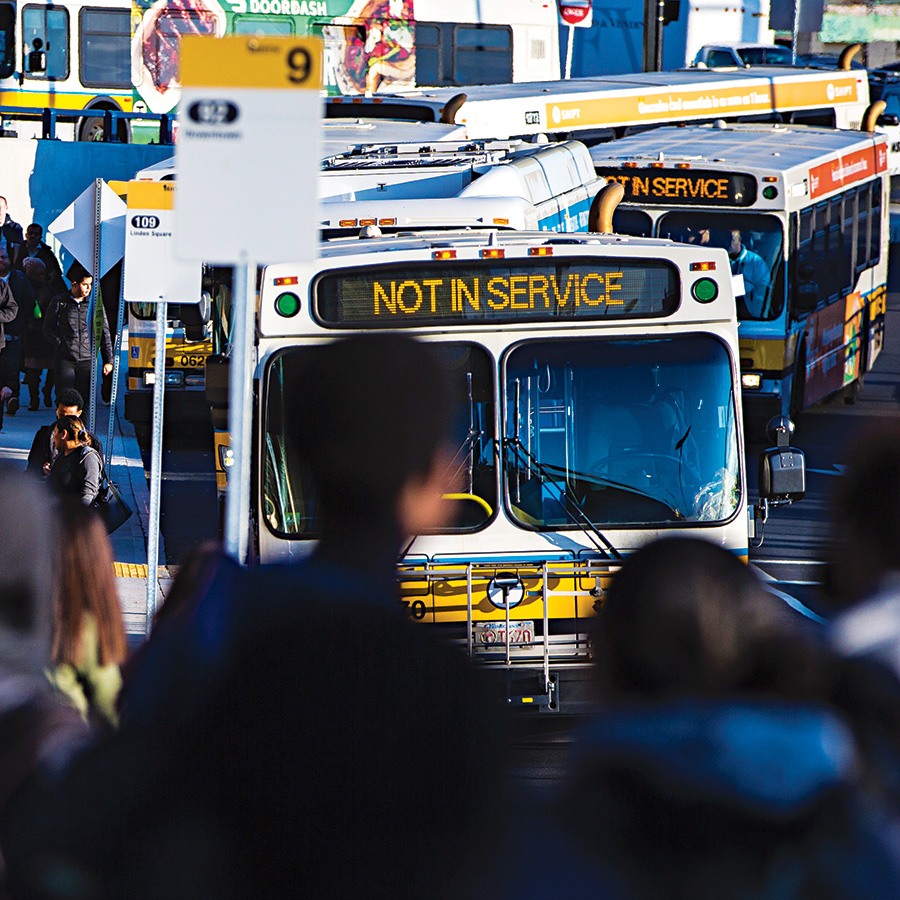
Photo by Nic Antaya/Boston Globe via Getty Images
17. Keep Corporate Hands Off
Collique Williams, senior organizer, Community Labor United
To save the T, protect it from privatization.
Whenever we talk about improving the MBTA, folks think it’s in such disrepair that it would be better if we just gave it to private corporations to fix. But when we give public infrastructure to private institutions, they want to extract the most from it, which usually leads to a decline in service. That includes so-called public-private partnerships, which threaten the public with a whole host of problems: lower job standards, diminished wages, cutting of corners, higher fees, and less transparency.
The Baker administration was a big fan of farming things out. And we want to make sure that doesn’t happen again. A Democratic governor and legislature can put safeguards in place to ensure that the MBTA is going to remain a public good.
The MBTA should be figuring out how to get out of some of these wasteful relationships: for instance, the Cubic Corporation contract for a new fare-collection system, which is behind schedule and over budget. Yes, there are times when the T has projects that can’t be done in-house. But there should be guardrails in place to make sure that our communities are taken care of and receive the benefit from the work that has to happen on the T.
18. Listen to Young Riders
Shavel’le Olivier, cofounder, Consult LeLa
The MBTA needs to engage young people in the planning process. Transportation seems like it’s a high-level thing to them because there’s a lot of jargon used. But when you break it down and explain it to them, they’ll start talking to you about their experiences. They get really excited and passionate to tell you that this corridor or this street is tough to travel on; I wish there were a longer signal time here so I can walk; I wish the crosswalk were shorter here; there needs to be a left-turn lane here.
One of the ways that officials can engage young people is by having more education in schools about the MBTA. It could even open the doors to a young person thinking about this as a career.
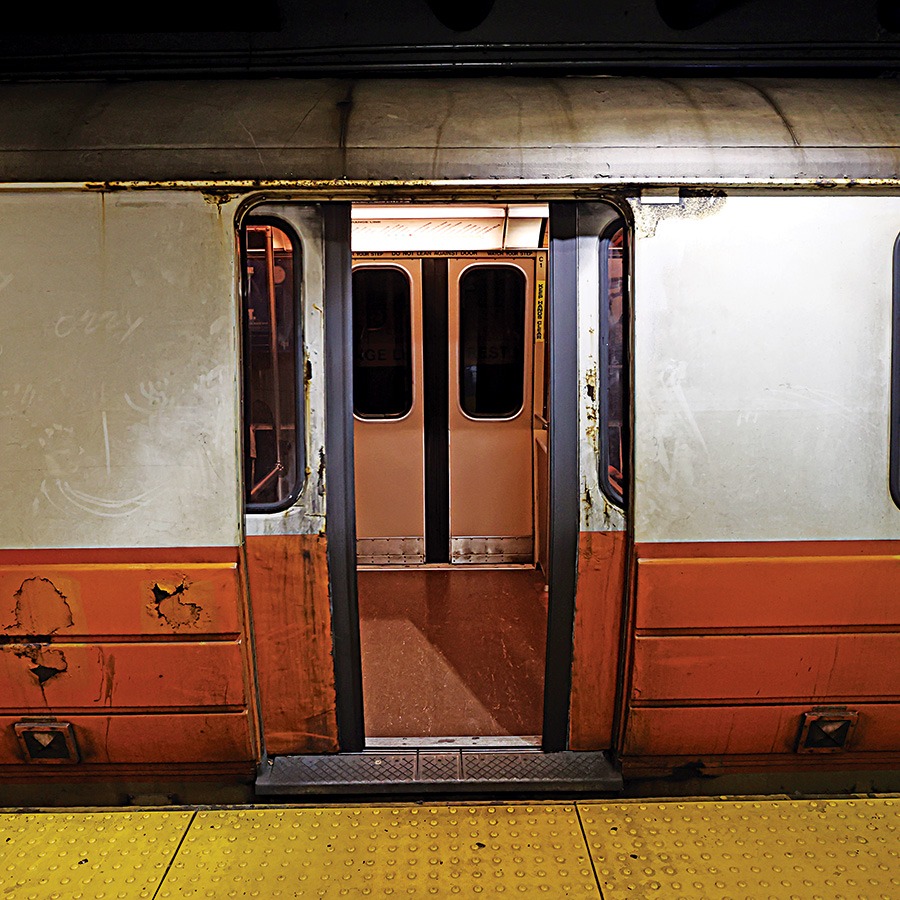
Photo by David L. Ryan/Boston Globe via Getty Images
19. Take Accessibility Beyond the Stations
Colin Killick, executive director, Disability Policy Consortium
The MBTA is responsible for the stations themselves being accessible. Can people with disabilities get from where they live and work to the stations? And can they get from the stations to the amenities around them?
An example: On the new Green Line Extension, the Gilman Square station in Somerville is at the bottom of a hill. At the top of that hill are City Hall, Somerville High School, and the main Somerville Public Library branch—hugely valuable civic institutions. But the streets on either side, going up that hill, are so steep as to be entirely non-navigable for most wheelchair users. You’re depriving people with disabilities who use public transit of the chance to reach those places.
Paying for accessibility improvements outside of stations is on the municipalities or state government. But the MBTA should participate in a collaborative process. They should want the system to be as useful as possible. Because otherwise, what’s the point?
20. There Oughta Be a Law
Kate Dineen, president and CEO, A Better City
Governor Maura Healey’s appointments to the MBTA board and the MBTA leadership, especially Thomas Glynn and Phillip Eng, reflect really amazing talent. We need them to draw upon their experiences to reshape any rules at the T that prevent them from creating a truly modern system. That means the MBTA board of directors should draft and propose legislation to give them exactly what they need to get things moving.
There are three challenges the legislation should address. One: the rules governing capital infrastructure delivery and procurement—in other words, how the MBTA spends money upgrading the system. Two: rules governing personnel management so that the MBTA can have sufficient, well-trained staff. And three: new revenue and financial planning—how we fund all of this.
The MBTA board and leadership have an opportunity to draw upon their own experiences. Between Glynn and Eng, not only do they know the pain points internally at the T, but they also know what has worked at Massport (where Glynn was CEO) and in New York (where Eng ran the Metropolitan Transportation Authority). They know what tools can be deployed to strategically address those pain points and get things moving.

Photo by Douglas Sacha/Getty Images
21. Clear the Bus Lanes
Justin Backal Balik, state program director, Evergreen Action
Keeping buses moving is important for the overall reliability and equity of the mass transit system. New York has been able to speed up its bus routes by enforcing bus lanes—without overtaxing the police and taking them away from high priorities such as public safety. There are now buses in New York equipped with mounted cameras that detect violations from cars that are blocking bus lanes or otherwise obstructing the movement of buses.
We can do it in a way that is fair and colorblind. In New York, it was purposely designed in a way so it’s not overly punitive—the fines start out low and then ratchet up if you keep obstructing bus lanes. It’s meant to serve as a deterrent.
First published in the print edition of the August 2023 issue with the headline “Fix It!”


